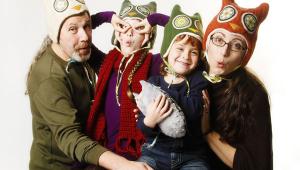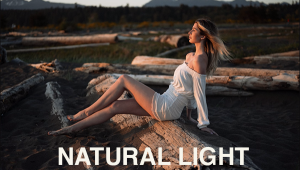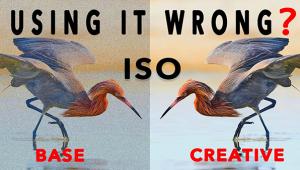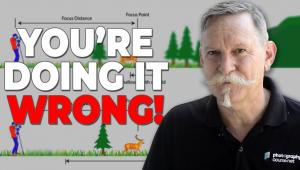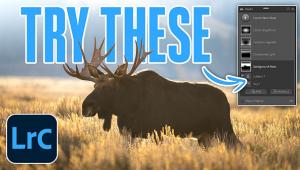Portrait Photography Marketing: Portrait Photography Marketing

There is also the difference in payment, with commercial portrait pricing based on usage, while consumer portrait pricing is based on a session fee plus print sales. Marketing is different with social media working extremely well for the consumer photographer (tag everyone in the family portrait on your Facebook page!) while commercial photographers successfully use a range of tools, from networking to direct mail. Through it all, however, one thing shared by these two portrait markets is the need for photographers with extraordinarily high levels of people skills, empathy, and willingness to find and tell the truth about their subjects. It’s my goal here to explore many aspects of this exciting market, and I’d like to thank the photographers interviewed for this article (see their websites at the end): Andy Freeberg, Charles Gupton, Kevin Lock, Robbie McClaran, and Rosanne Olson.
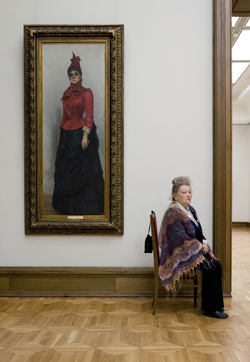
Shutterbug: First, do you work with consumer clients, commercial clients, or both? And tell us something about your clients and work.
Andy Freeberg: I work with commercial and editorial portrait clients. I began my professional photography career in New York taking portraits for such publications as The Village Voice, Rolling Stone, Time, and Fortune, photographing the likes of Michael Jackson, Bill Gates, and Neil Young. I have always been fascinated with the gallery and museum worlds and often turn my camera on the dealers, gallery patrons, artists, museum guards, and their interplay with the works of art themselves. My project Guardians, about the women who guard the art in Russian museums, won Photolucida’s Critical Mass book award and was published in 2010. Now my work is in many public and private collections, including the Museum of Fine Arts Boston, the Portland Art Museum, the George Eastman House, and the Museum of Fine Arts Houston.
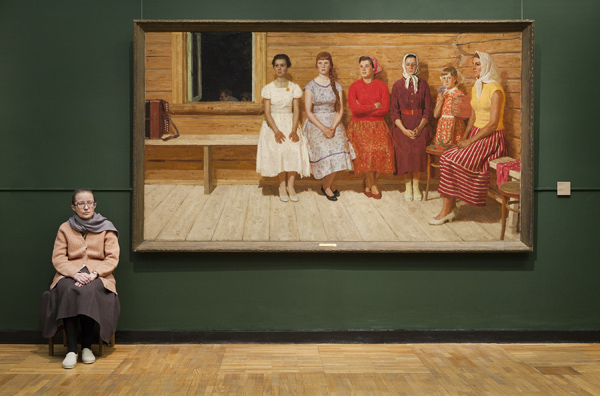



Charles Gupton: Primarily I do commercial projects, but I also, on occasion, accept personal commissions. I have a variety of clients throughout the US and abroad, including Texaco, Nike, Business Week, and Newsweek. My primary desire is to create a great experience for all the people I come in contact with.
Rosanne Olson: I do both consumer portraits and commercial work. I began my career as a photojournalist at The Register-Guard in Eugene, Oregon, after receiving my master’s degree in journalism. Five years later, when my husband and I moved to Seattle, I started Rosanne Olson Photography. Over the past 25 years I have collaborated with designers and art directors around the country, photographing for advertising campaigns such as the New York City Ballet, Seattle Opera, Seattle Symphony, and Seattle Children’s Hospital. In 2008 I authored a book called This is Who I Am, a book of photographs and essays that celebrates women and their stories. One of the things I love best about photography is portraiture. My goal is to create portraits that are deep and true.
Kevin Lock: I specialize in environmental portraiture, annual report, architectural, and editorial assignment work so I work mostly with commercial clients. Occasionally I will be contacted to do a private portrait by word of mouth but I do not actively market to that demographic. For my personal work I do work with individuals who I find interesting or unique and this is usually done for trade.
Robbie McClaran: I do almost exclusively editorial and commercial work documenting the American people and landscape. My clients include magazines such as Time, Business Week, Forbes, Esquire, Rolling Stone, and People. I do accept personal commissions, although not often.


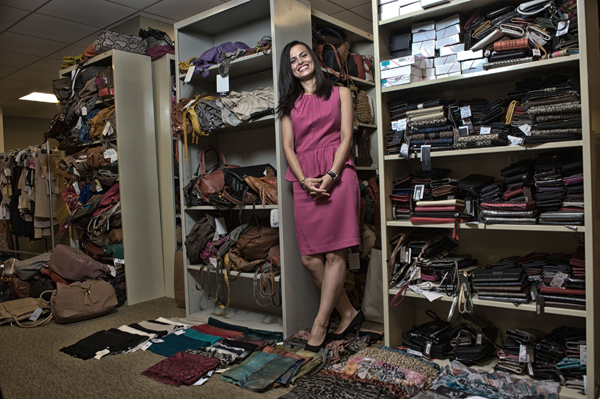

SB: What do you see as the most important differences between consumer and commercial portrait photography assignments?
Rosanne Olson: If it is commercial, it is likely to be more about what the client (via the ad agency) wants to convey rather than the deep truth of the individual I am photographing. For personal portraits (and these can include business portraits of individuals) I spend a lot of time getting to know the person before picking up the camera. I strive for photographs that are both beautiful and true to the person I am working with. My specialty, working to help women feel beautiful, allows me the pleasure of providing a session that can be transformative. I have heard this many times. It is like holding up a mirror to someone so they can see their beauty for the first time.
The commercial world is much different. I have a rep, Debby Brown, who shows and markets my work. It is quite a separate world and I must say that doing personal portraiture gives me deep satisfaction because I am creating lifelong memories for people and helping people, especially women.
The other thing about portraiture that is interesting and challenging is that for the first time in my career I have to be willing to talk about money. This is expected in commercial work but I usually have my rep do the negotiating for me. The portraiture model has taken me some time and some work with consultants to establish a way to talk to people about money. The business model is so different from commercial—in that with commercial work the pricing is negotiated going into the job based on usage and expenses. For portraiture there is a session or creative fee that is quite small and then one learns to present the photographs to the client in such a way that they will hopefully make a substantial purchase of prints.


Charles Gupton: A number of years ago there was a sharp divide between commercial and personal commission photographers. In my experience, commercial buyers would not hire personal portrait photographers for commercial assignments because the skill sets of many in the field were not up to the standards required to complete commercial projects.
Also, the business model for most personal portrait photographers was to charge a relatively small “sitting fee” and make up the balance in the final, delivered portrait which was priced according to the size of the portrait order. I believe that model is changing with time. When I accept a portrait commission, I charge a fee based on my time and the anticipated value of the portrait my client has in mind before we start. We are often creating a portrait to be displayed in a particular place, with a desire to match the environment it’s going to be in. That more closely parallels the way that I work in the commercial world.
The difference between the two is that commercial work is commissioned to sell something, usually a concept or an emotionally engaging story of who a company is. Or, possibly, the image may represent the company’s target customer as seen through the customer’s eyes. Regardless, the image is intended to move the viewer emotionally to make a connection with the company and, in time, to make a sale.
A personal portrait is usually intended to tell a story about the subject that marks a point in time to be remembered for generations to come. At its basic level it says, “This is what these people looked like at that time.” On a deeper level, it tells a story about the subjects, who they were, what their relationships are to each other, and possibly what their interests were. For example, a family portrayed as hikers on a trail tells more of a story about them than a family photographed in a studio wearing matching white shirts and blue jeans.
My goal in creating any portrait is to produce an image that tells a particular story, whether it’s for a family or a company. My desire is to create a lasting value, a legacy image that makes it difficult for a viewer to determine whether the image was created for a personal or commercial application if it were to be viewed out of context. For example, I’d like to have a portrait of a family which I shot for an editorial assignment to also be placed in a 24x30 frame in their home and the viewer not know which party commissioned the work.



Robbie McClaran: When doing work directly for consumers your primary job is to make the subject look good whereas in editorial the job is to tell the story, no matter whether that means making the subject look good or otherwise.
Kevin Lock: The most important difference between consumer and commercial portrait photography assignments is the money. The commercial offers payment that I consider to be well worth my time, which is why I market to that group. Generally the consumer portrait photography assignments have much smaller budgets. This method is probably the opposite of what works for many photographers but I have been working this way for almost 20 years and have found it much more rewarding.
Andy Freeberg: I’ve had to figure out an entirely different market for fine art portraits that is quite a major change from the editorial and corporate work I was doing. I finance the projects myself these days so it’s a big risk, but I’m starting to make some money at it. Besides the crazy unregulated art world business that I find myself in, I’m also able to use the skills I honed as an editorial photographer to gain access to my recent subjects.

SB: What skills or areas of expertise do you think a photographer needs to develop for a successful portrait business?
Charles Gupton: It still amazes me when I hear stories of photographers who don’t possess good people skills. The ability to develop rapport quickly is critical to establishing trust and getting people in position quickly for a portrait.
You also need the ability to network and meet people outside of your comfort zone. You must be able to ask questions that uncover the information one needs to adequately estimate the costs of a project to give a proper quote and to understand what the client is trying to communicate. It is very important to understand what it costs you to do every job and what it costs you to be in business. A successful business is one that is profitable.
Andy Freeberg: I think you need really good people skills and good business sense, which also can require good people skills when it comes to negotiating. You need to be able to quickly relate to people you’re just meeting for the first time so that they will be relaxed in front of the camera. You also may need to convince people to give you access to off-limits areas in order to make a successful portrait.
Kevin Lock: You need to develop strong relationships and partnerships with your clients. You need to always be a professional and not take rejection personally; 90 percent of the projects I bid on, I don’t get and I can’t afford to let that get me down. You also need to cultivate the ability to solve your client’s problems.
Robbie McClaran: Any portrait photographer has to be genuinely interested in people, have good people skills, and know how to read people; for instance, know how to read when someone’s attention span has reached its limit. I’ve often said the best training I had for being a portrait photographer was my five years as a bartender during my school days.
Rosanne Olson: I think a sense of compassion for the subject is very important. Not that that isn’t true in commercial work but in commercial photography one is frequently working with models. What I love about my portrait work is working with regular people who have not been in front of the camera before. I love to help them have a positive experience, one they will remember for the rest of their lives. My approach to the portrait business is very “Nordstrom-like,” meaning my goal is to help the client have a good experience and will go out of my way to do so.
Another thing is that you may work with an assistant in commercial work; you might not be able to include an assistant in your portraiture work unless you are doing high-end weddings. What that means is that you must be skillful at lighting, wrangling your gear (if you go on location), and problem solving on your own.

SB: When you are looking at your overall marketing efforts, what seems to work best for you—using traditional marketing or other digital marketing tools, or both?
Charles Gupton: What works best for me is building personal relationships with people in the business world. I do a lot of networking in the business community. People prefer to work with people they know, like, and trust. Engaging with business people in environments where they are comfortable helps establish those values. Human nature is such that we all like to hang out where we feel comfortable and let others come to us.
I see all other forms of marketing as being supportive of the relationships I’m building. When a potential client goes to my website, reads a blog, or engages me on Facebook, I believe they’re simply trying to find out if I’m consistent with the person they engage with in person.
Andy Freeberg: I am primarily marketing my own fine art projects these days. I sometimes send mailers for a big show. I use e-mail blasts to announce shows and reviews. I use my website and Facebook for promoting as well.
Robbie McClaran: This is without a doubt the $100,000 question. Today’s clients are so media savvy and so weary of being marketed to that finding a good strategy is very difficult. And what works for one person won’t work for another. I’m currently working on yet another website redesign!
Rosanne Olson: For marketing my portrait work, my approach is more personal and individual-based. There is a lot of word-of-mouth recommendation involved. I also have a monthly newsletter that I send out. It is not about selling but rather is a letter about things, ideas, or people that move me. I also give talks about my book to conferences, high schools, and women’s stores (such as Eileen Fisher in Seattle).
I am committed to this idea of helping women see their beauty so all of this doesn’t seem to me like marketing. It just seems like bringing awareness to the people I talk to. I have a professional Facebook page (fans and all) and I do write a monthly newsletter using my mailing list on MyEmma.com. I also have a blog. I rarely Tweet, though I suppose I should. I find it all a bit overwhelming and yet try to maintain a communication schedule of approximately one newsletter and one blog per month for digital communications. I don’t want to wear people out with too many communiqués and I don’t really send out printed materials because of the expense.
Kevin Lock: Word of mouth has been my primary mode of marketing. If you treat your clients well, they will talk about you. They will also take you with them as their career paths shift. ASMP’s Find A Photographer (FAP) has been phenomenally successful for me. Through FAP I have had several large jobs that have paid my ASMP dues for the rest of my life. I also believe in the power of direct marketing. While cold calling can be painful, it is necessary. I also have several websites that are specific for different types of photography and I market those to different potential clients. For 2013 I plan on doing a lot more of that and perhaps finally putting my Agency Access account to use.

SB: What advice do you have for those looking at portrait photography as a business—pitfalls to avoid or opportunities to pursue?
Andy Freeberg: I have seen the editorial market completely turn upside down in the last 12 years and I’ve seen some photographers able to carve out a niche and many others struggling at it or go out of business. I would say you have to be completely devoted to photography to make it and even then you might want to have a backup plan.
Rosanne Olson: One of the best things I did was hire consultants (Sondra Ayers and Jerry Deck at Buzzworthysuccess.com). They have affordable group-coaching classes to get you started and then one-on-one individual consultations which have been very helpful to me. Another word of advice is to attend one of the two huge conferences. One is Wedding & Portrait Photographers International (WPPI) in Las Vegas and the other is Professional Photographers of America (PPA) in Atlanta. They are both very educational and informative, especially for people coming from commercial photography to the portraiture business. The competition is fierce, perhaps even more than in commercial photography! There are a million and one portrait photographers in the country.
Kevin Lock: I would advise those who are looking at portrait photography to strongly consider joining a photographic trade organization. While I am deeply indebted and loyal to the American Society of Media Photographers (ASMP), I would say if the ASMP is not for you then consider the APA, NPPA, or WPPI. The amount of education, feedback, and camaraderie you can get by getting involved in one of those organizations cannot be overstated.
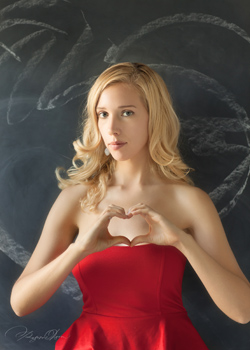
Charles Gupton: This business is tougher than I’ve ever experienced, but I still see opportunities for those who are focused on caring for other people’s needs. Many clients don’t really know exactly what they want in an image. They need a professional who listens and guides them into work that communicates, engages, and delivers a delightful experience. Unfortunately, many photographers still position themselves as picture takers, not engaging storytellers. Create imagery that speaks to your emotional heart not your technical expertise. Above all, avoid basing your work on being lower priced than your perceived competitor. Winning that race causes everyone to lose.
Robbie McClaran: Do great work. Don’t be afraid to say no to bad deals. Educate yourself in business practices.

Web Resources
Contributors
Andy Freeberg
http://andyfreeberg.com
Charles Gupton
www.charlesguptonphoto.com
http://charlesgupton.com (blog)
Kevin Lock
www.lockphoto.com
Robbie McClaran
http://mcclaran.com
Rosanne Olson
www.rosanneolson.com
http://bodyimagebook.com
www.debbybrown.com
Helpful Resources From Our Contributors
Agency Access
http://agencyaccess.com
APA
www.apanational.com
ASMP
www.asmp.org
ASMP’s Find A Photographer
http://asmp.org/find-a-photographer
Sondra Ayers and Jerry Deck
www.buzzworthysuccess.com
MyEmma.com
www.MyEmma.com
NPPA
www.nppa.org
PPA
www.ppa.com
WPPI
www.wppionline.com
- Log in or register to post comments






